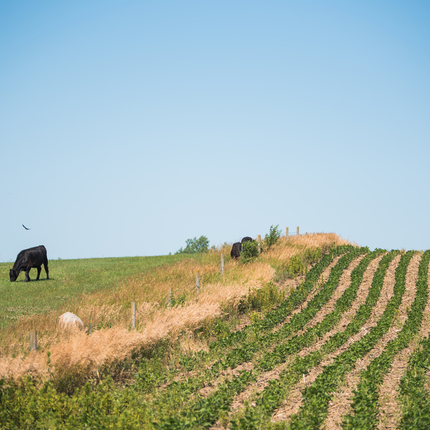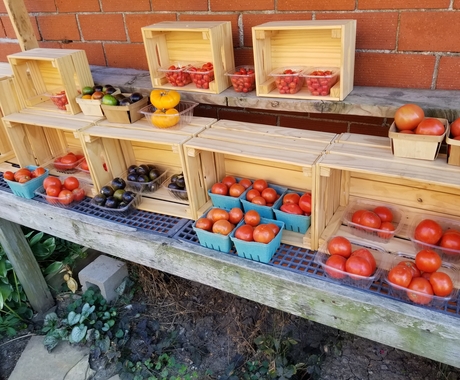The House Agriculture Committee released its first version of the farm bill on April 11. Unfortunately, the proposal included steep cuts to conservation, ignored the need for capping crop insurance premium subsidies, and made very distressing cuts to many programs that support innovation and investment in rural communities.
This is the opening round of this year’s farm bill debate. We’re reporting on this troubling bill so you understand the stakes of the fight ahead. You can orient yourself to where we are in full farm bill process by reading our previous blog.
Below, we outline several unfortunate proposals, as well as some positive but comparatively small changes.
Conservation
The draft bill makes very upsetting changes to working lands conservation. First, it proposes steep funding cuts to working lands conservation programs, by nearly $5 billion over 10 years. The 2014 farm bill cut the entire conservation title – including easement and conservation set-asides – by only $4 billion over 10 years.
Within these cuts is the elimination of the Conservation Stewardship Program (CSP). CSP currently protects over 70 million acres nationwide. Farmers and ranchers must demonstrate an existing level of conservation in order to be eligible. CSP offers a path for farmers and ranchers to increase their stewardship level for their whole operation while still maintaining production on their land. By eliminating the core of CSP, the draft bill sends the message that conservation should be a low priority for rural America.
We previously endorsed several other bills that would have instead improved our working lands conservation programs and strengthened the handshake between conservation and crop insurance. We are disappointed that almost none of these provisions were included in this draft farm bill.
Finally, there were a few positive proposals. The draft bill proposed to increase the number of acres eligible for enrollment in the Conservation Reserve Program – Grasslands Initiative, which offers another important avenue for farmers and ranchers to improve their conservation. The draft bill also eliminates the requirement that 60 percent of Environmental Quality Incentives Program (EQIP) funding go toward livestock operations, which would decrease the amount used to support Confined Animal Feeding Operations.
Crop insurance and payment limitations
While our agricultural system needs a strong safety net, the current crop insurance system provides unlimited support to the largest farms in the form of premium subsidies. The passage of a new farm bill is an important opportunity to bring greater fairness to agriculture and level the playing field for farmers and ranchers.
Instead, the draft bill only includes proposals that backtrack on crop insurance and payment limitations, while throwing a few crumbs to beginning farmers.
First, the bill does nothing to cap crop insurance premium subsidies to the largest farmers. Under current law, one operation could farm the entire state of Iowa and the federal government would subsidize their crop insurance on every single acre. The draft bill fails to correct this.
The draft bill also reverses wins made in the 2014 farm bill to limit farm program payments. First, the bill would remove subsidy payment limits for corporate farms, allowing any farm with this business structure (approximately 10 percent of farms) immediate access to unlimited subsidies. The draft bill also adds cousins, nieces, and nephews to the list of eligible family members that already includes siblings, children, and grandparents. Expanding this list would allow each of these family members to newly receive payments up to the limit of $125,000 and dramatically increasing the level of subsidy that some farms would have access to. These changes practically guarantee a return to unlimited farm program payments. The country needs a farm safety net, not handouts to the largest and wealthiest operations.
One small point of progress is that the bill would make the crop insurance product Whole Farm Revenue Protection Program available to greater numbers of beginning farmers. But, at the same time, the bill would eliminate the Risk Management Education Partnership Program, including $17 million in mandatory funding, which supports organizations in educating farmers and ranchers about managing risk.
Beginning/local/regional food/rural development/organic production
The Center for Rural Affairs has been fighting for rural communities for decades. We are proud to have helped win programs that create new opportunity for small towns and family farmers. The draft bill proposes to completely eliminate the funding for several of these valuable programs. For instance:
The Rural Microentrepreneur Assistance Program (RMAP) supports rural entrepreneurs with access to loans and business assistance. The draft bill proposes to completely eliminate $15 million in mandatory funding for the program.
The Value Added Producer Grants Program (VAPG) provides a path for farmers and ranchers to diversify their income streams by building a “value-add” portion to their operation. This can include making milk into cheese or fruit into jam. The draft bill proposes to eliminate the $58.5 million of mandatory funding for the program.
The Farmers Market and Local Food Promotion Program supports farmers to create new enterprise and develop new local and regional markets. The draft bill proposes to eliminate $150 million in mandatory funding for the program.
Organic agriculture offers an important economic opportunity for many rural farmers and ranchers, particularly during times of low prices. However, the cost of certifying can be prohibitive for some. The National Organic Certification Cost Share Program (NOCCS) offers farmers and ranchers support for that certification cost, thereby allowing farmers and ranchers to access the higher income stream from selling organic products. The draft bill proposes to eliminate $58 million in funding for NOCCS.
Renewable energy offers a vital economic opportunity in many rural communities. The Rural Energy for America Program provides grants and guaranteed loans for energy production and efficiency projects. But, the draft bill proposes to eliminate $250 million in funding for REAP.
With all of these eliminations of funding, it was a happy surprise to see that some important programs did receive funding under the draft bill. The Beginning Farmer and Rancher Development Program, the Outreach and Assistance for Socially Disadvantaged and Veteran Farmers and Ranchers Program, and the Conservation Reserve Program – Transition Incentive Program all would receive funding equal to the level they have under the 2014 farm bill. While these are not the increases we maintain are necessary for true investment in rural communities, these are programs where we won’t have to fight back from zero.
This isn’t over
This bill – the initial draft of the farm bill offered by the agriculture committee in one of two chambers of Congress – is the first step on our country’s path to passing the next farm bill. A bad bill at this initial juncture just gives us – and you – more reasons to stay engaged.
We want to see a positive, bipartisan farm bill passed that supports our farmers, ranchers, and rural communities. Do you share this vision? Let us know how you would like to help, at annaj@cfra.org.





